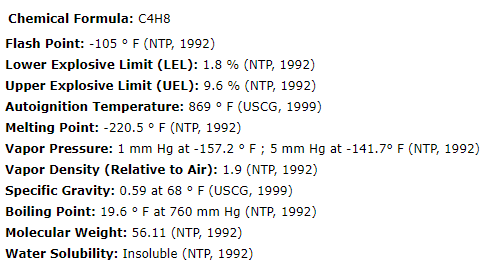Isobutylene Calibration Gas
Isobutylene (C4H8) Calibration Gas Cylinders
Isobutylene (C4H8) Calibration Gas
Isobutylene (C4H8) is a colorless gas with vague petroleum (gas) like odor, that some describe as a "sweet" smell. The gas will travel along the ground as it is heavier than air and also presents an explosion danger. The gas has the ability to react easily with a number of materials such as halogens, aluminum chloride, carbon monoxide, and concentrated sulfuric acid. Isobutylene is formed during the breaking down of petroleum, which is used to make gasoline. This gas is not poisonous but does have the potential to cause some symptoms such as a headache, fatigue, dizziness, and possibly frostbite (when exposed to liquid Isobutylene) if you have been exposed to moderate concentrations of C4H8. As with most harmful gases, one of the most apparent occupational threats includes its ability to create an oxygen deficient atmosphere.
Also Known As: Isobutene, Methylpropene
Dangers of Isobutylene (C4H8)
Isobutylene is a non-toxic gas, but does cause some mild health effects such as irritation to the eyes nose and throat when inhalation of moderate concentrations occurs. Higher levels can cause unconsciousness, coma, or death.
Occupational Exposure Limits
There are no established Occupational Exposure Limits for Isobutylene Gas. This does not mean that it does not have the potential to be harmful. An oxygen deficient atmosphere is the number one indicator to look for when working in a confined space or other occupational locations where exposure to harmful gases may occur.
Physical Properties of Isobutylene

Industrial Applications for Isobutylene
Isobutylene's main use is in the production of gasoline products such as petroleum, butanes and octanes. It is formed when the large molecules of petroleum are broken down in order to form gasoline. This gas is also significantly used in synthetic rubber production, and additionally in the production of butyl rubber, and isobutylene-isoprene rubber (IIR). The demand for its use in the automotive industry is rapidly increasing as well due to its superb chemical and mechanical properties to include high vibrations and low permeability to moisture and air. A derivative product of Isobutylene has been banned by EPA in the United States for use as a fuel additive due to the toxic effects of the harmful emissions that makes its way to our drinking water leading to contamination.
Handling & Storage
Should be trained on proper handling and storage. Must be stored to avoid contact with oxidizing agents such as peroxides, chlorates, nitrates, hydrochloric acid. Sources of ignition such as smoking, and open flames are prohibited when ISO is handled, used, or stored. Use only non-sparking tools and equipment, especially when opening containers of ISO. Cool-well ventilated area. Gas under pressure/compressed gas.
Author: ChéAna Morgan
Isobutylene Calibration Gas Cylinders
EGas Depot offers a wide range of Isobutylene (C4H8) Calibration Gas Cylinders. With 12 different liter sizes and 12 different options for your ppm requirements available to you, we are a one-stop shop for all of your field calibration needs.
